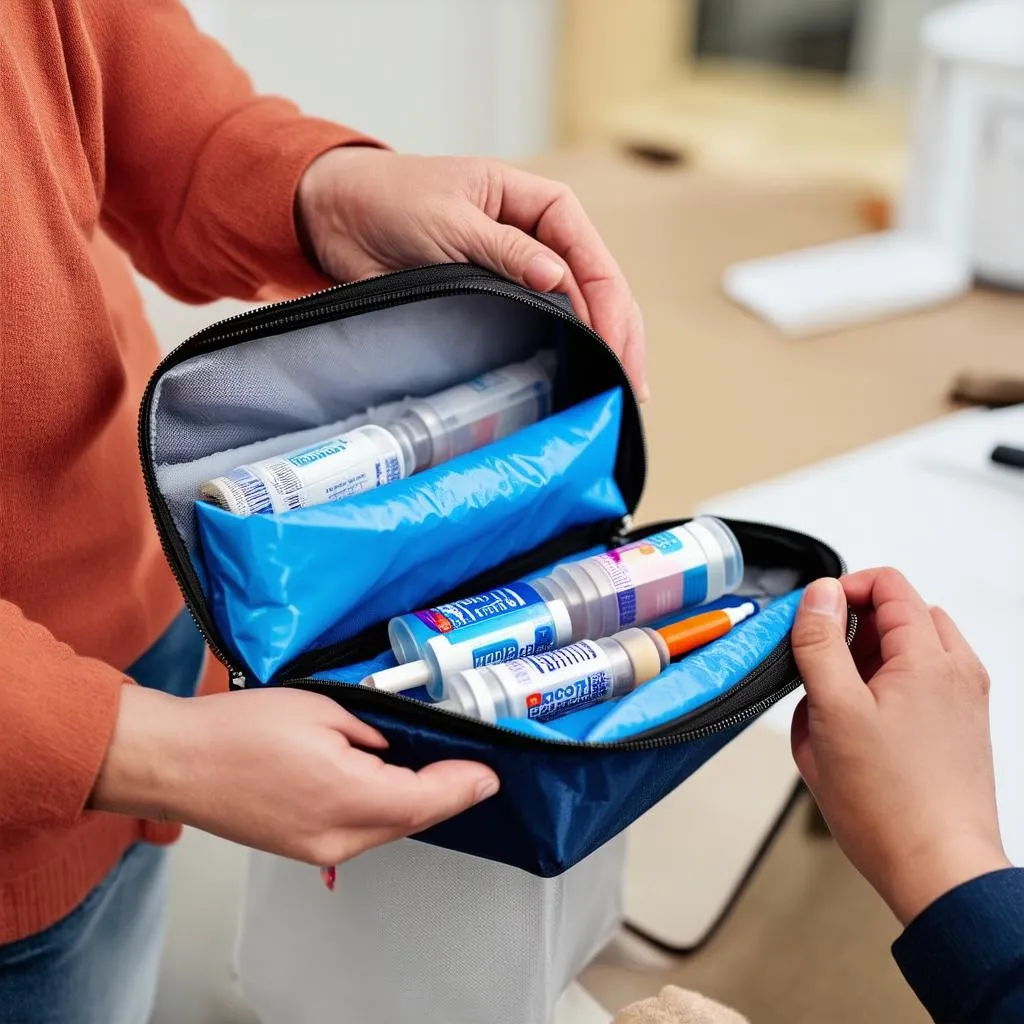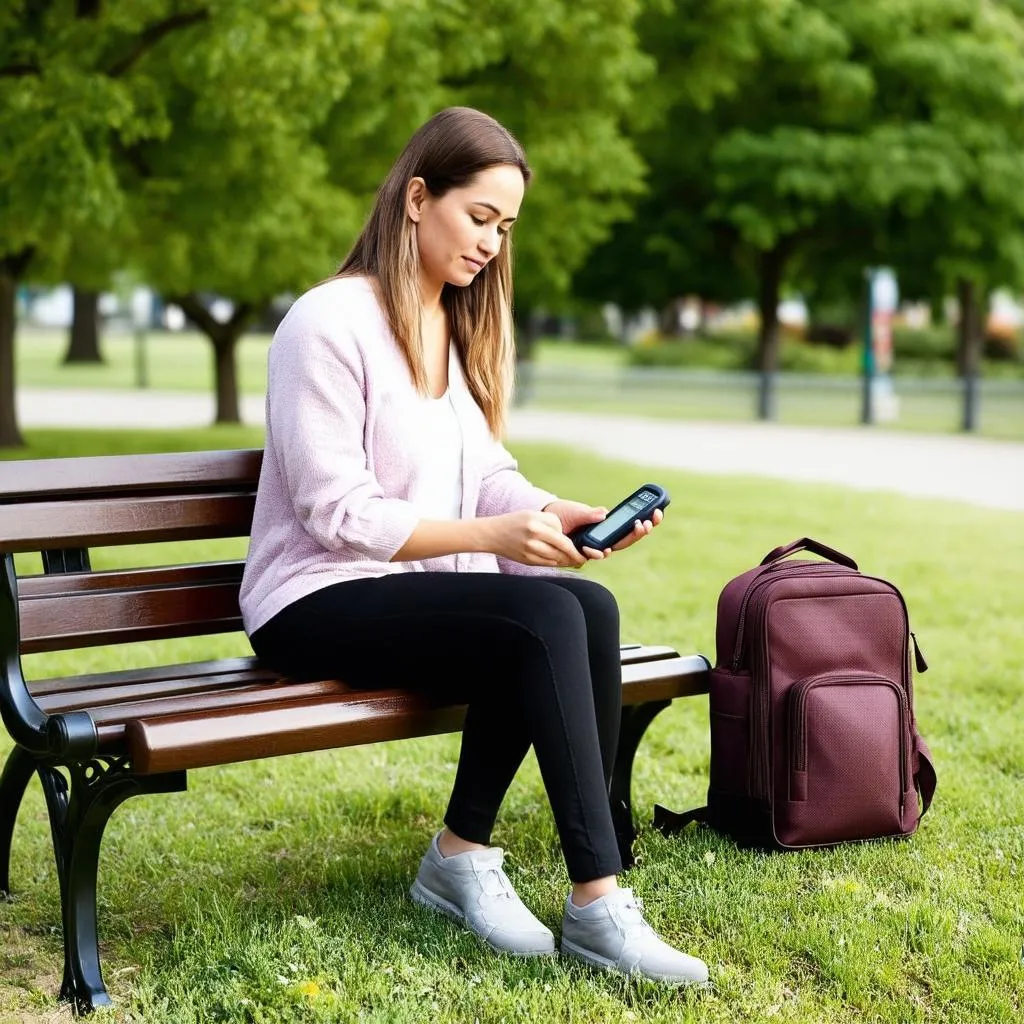Planning a trip and wondering how to keep your insulin cold? You’re not alone! Many travelers with diabetes face this challenge. Imagine this: you’re strolling through the bustling streets of Bangkok, the aroma of street food filling the air, but your mind keeps returning to your insulin back in your hotel room. Is it staying cold enough?
Don’t let these worries dampen your adventurous spirit! This guide will equip you with everything you need to know about keeping your insulin safe and effective during your travels.
Understanding Insulin Storage
Before we dive into travel tips, let’s refresh our understanding of proper insulin storage.
Why is Keeping Insulin Cold Important?
Insulin is a delicate hormone that needs to be kept within a specific temperature range to remain effective. Exposure to extreme temperatures, both hot and cold, can damage its potency.
According to Dr. Sarah Jones, author of “Traveling with Diabetes,” “Insulin that hasn’t been stored correctly might not lower your blood sugar effectively, putting you at risk of hyperglycemia.”
Recommended Temperature Range for Insulin Storage
- Unopened Insulin Vials/Pens: Can be stored in the refrigerator at 2°C to 8°C (36°F to 46°F) until their expiration date.
- In-use Insulin Vials/Pens: Can be kept at room temperature (up to 25°C or 77°F) for a certain period, usually around 28 days. Check the label on your insulin for specific recommendations.
Methods for Keeping Insulin Cold While Traveling
1. Insulated Travel Bags
Insulated bags are your best friend when traveling with insulin. They come in various sizes and styles to suit your needs.
- Types: Look for bags specifically designed for medication, with features like:
- Hard-sided exteriors for added protection
- Multiple compartments for organization
- Temperature monitoring capabilities
- Cooling Options:
- Ice packs: Reusable ice packs are widely available and provide reliable cooling. Freeze them solid before your trip and place them in your bag with your insulin.
- Pre-frozen cooling inserts: These convenient inserts maintain a specific temperature for a set duration, eliminating the need for ice.
 Insulated Travel Bag for Insulin
Insulated Travel Bag for Insulin
2. Portable Insulin Coolers
For longer trips or if you require precise temperature control, consider a portable insulin cooler:
- Powered Coolers: These coolers plug into a car outlet or standard electrical outlet, ensuring consistent cooling. Some models also offer battery backup for added peace of mind.
- Chemical-Based Coolers: These compact coolers use a chemical reaction to generate cold temperatures. They’re ideal for short trips or as a backup option.
3. Pre-Filled Insulin Pens
If you use insulin pens, consider switching to pre-filled pens for your trip. They’re more convenient than carrying vials and syringes and are less susceptible to temperature fluctuations when stored at room temperature.
Planning Your Trip
Packing Your Insulin
- Quantity: Pack enough insulin to last your entire trip, plus some extra in case of delays.
- Organization: Store your insulin upright in its original packaging within your chosen cooling method.
- Labeling: Clearly label your insulin with your name and contact information.
Airport Security
- Carry-on Luggage: Always keep your insulin in your carry-on luggage, not in checked baggage.
- Medical Documentation: Carry a letter from your doctor stating your need for insulin and any other necessary medications. This will help with any security checks.
- TSA Guidelines: Familiarize yourself with the TSA guidelines for traveling with medications. For example, you can bring ice packs and gel packs through security if they’re frozen solid.
FAQs About Keeping Insulin Cold While Traveling
Q: Can I store my insulin in a hotel room mini-fridge?
A: While mini-fridges can be helpful, they often don’t maintain a consistent temperature. It’s best to use them in conjunction with an insulated bag or cooler.
Q: What happens if my insulin freezes?
A: Do not use frozen insulin. It’s best to contact your doctor or pharmacist for guidance.
Q: Can I pack my insulin in my checked luggage?
A: No, it’s not recommended to pack insulin in checked luggage. The cargo hold’s temperature can fluctuate significantly, potentially damaging your insulin.
Travel Tips for a Smooth Journey
Beyond keeping your insulin safe, here are some additional travel tips for people with diabetes:
- Pack Snacks: Always carry snacks like granola bars, fruit, or nuts to manage blood sugar levels during long flights or excursions.
- Stay Hydrated: Drink plenty of water, especially when traveling to warmer climates.
- Monitor Blood Sugar Regularly: Test your blood sugar more frequently than usual, especially when adjusting to new time zones or activities.
 Woman Monitoring Blood Sugar
Woman Monitoring Blood Sugar
Explore the World with Confidence
Traveling with diabetes requires extra planning but don’t let it hold you back from experiencing the world! With the right preparation and these tips, you can have worry-free adventures.
For more travel tips and insights, visit travelcar.edu.vn. We offer resources and information to help you plan unforgettable journeys!
Remember
This article provides general information and should not substitute advice from healthcare professionals. Always consult your doctor for personalized recommendations regarding your diabetes management and travel plans.